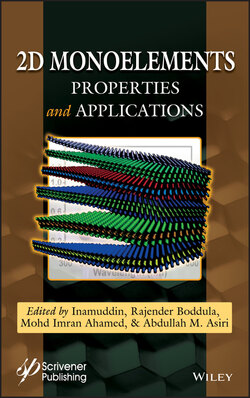Читать книгу 2D Monoelements - Группа авторов - Страница 46
2.3 Experimental Preparation 2.3.1 Mechanical Exfoliation
ОглавлениеMechanical exfoliation is the most common method for preparing monolayer or few-layer 2D materials. In 2004, Novoselov and Geim obtained the first monolayer graphene via this method in human history [1]. Thereafter, this method is widely applied to the preparation of other layered materials. The van der Waals bond between the layers of the layered material is weak, and the binding energy is only 40–70 meV, so the layers and layers are more easily isolated by the external force [13]. The mechanical exfoliation is very suitable for scientific research because of its simple method, and the obtained sample is free from contamination and has a higher crystal quality.
Figure 2.2 HSE06 calculated electronic band structures of trilayer, bilayer, and monolayer antimonene. Dots: Fermi levels. Reproduced with permission [8]. Copyright 2015, Wiley-VCH.
Since the calculated binding energy of β-antimony is smaller than 30 meV, this method can be used to peel off its monolayer form [11]. Ares et al. first obtained monolayer antimonene by a modified mechanical exfoliation with a double-step transfer procedure [14]. The specific preparation process is shown in Figure 2.3a, it started by repetitive peeling a freshly cleaved antimony crystal using adhesive tape, where sub-millimeter flakes were easily obtained. Instead of direct transfer of these flakes onto a SiO2/Si substrate, an initial transfer from the adhesive tape to a viscoelastic stamp (Gel-park Gel-film) was needed. The stamp was then pressed against the surface of the SiO2/Si substrate and slowly peeled off from it, consequently, large-area antimony thin flakes were prepared in a more controlled way [15]. The isolated antimony flakes can be identified by optical microscopy, where different colors represent different thicknesses. The thickness was determined by atomic force microscopy (AFM), and it was found that the height of a monolayer terrace was 0.9 nm due to the presence of water layers. By measuring the step height of single folds, the thickness of a monolayer antimonene was considered to be 0.4 nm (Figure 2.3b, c). The isolated flakes showed good stability in ambient conditions, even if they were immersed in water.
Figure 2.3 (a) Diagram of the steps involved in the sophisticated version of mechanical exfoliation. (b) AFM image of folded antimonene flake. (c) Profile along the green line in the inset of (b). (a) Reproduced with permission [15]. Copyright 2014, IOP Publishing Ltd. (b–c) Reproduced with permission [14]. Copyright 2016, Wiley-VCH.
Mechanical exfoliation process usually causes antimony flakes with different thicknesses, but Raman signals of these flakes are too weak to be detected which cannot provide their thickness information. Another work by Ares et al. developed a simple and quite accurate method to identify the thicknesses of isolated antimony flakes using optical microscopy [16]. Comparing the optical contrast versus thickness measurements with a Fresnel Law model, the refractive index and absorption coefficient of these flakes in the visible spectrum can be yielded, which are obviously different in thin and thick flakes, then being used to distinguish various thicknesses. After that, Abellán et al. prepared few-layer antimonene flakes on the SiO2/Si and gold substrates by mechanical exfoliation and then functionalized their surface with a perylene bisimide (PDI) [17]. This noncovalent functionalization process increases the optical contrast of antimonene under white-light illumination and leads to an obvious quenching of the perylene fluorescence, allowing easy characterization of the flakes in seconds by scanning Raman microscopy.
